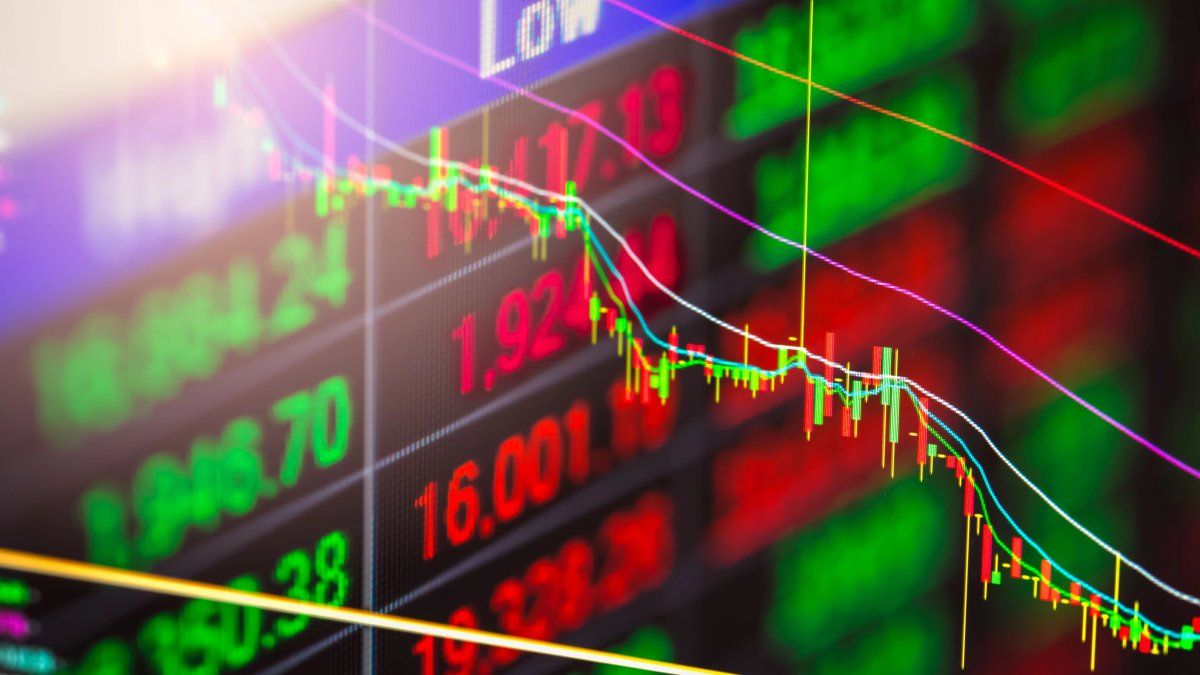He country risk falls this Tuesday January 7th until its May 2018 lowgiven the growing interest of investors in the assets due to the projection of a important recovery of economic activity in 2025. This bank indicator JP Morgan published by Reuters fell to 454 basis pointsone day after breaking the 600-point barrier. However, this drop responds to an “error” in the technical measurement.
According to Felipe Nunezofficial of the Ministry of Economythese values of country risk responded to a “descalce” in the price for the payment of coupons and amortization of the bonds. However, the downward trend of this indicator continues.
“It is JP Morgan’s mistake, which does not consider that the price has settlement in T+1. “Exactly the same thing happened in July (it fell 7.7% in one day and recovered 6.4% the next day),” the economist explained on his social network account X (formerly Twitter). Federico García Martínez.
Bonds on the rise
The truth is that Dollar bonds rise up to 0.6% led by Global 2035, followed by Bonar 2035 (+0.4%), Global 2038 and 2041 (+0.3%). Meanwhile, Bonar 2029, Global 2029 (-0.4%) and Bonar 2038 (-0.3%) lost up to 0.5%.
“The deepening of the fall in country risk It occurs in the week of payment of coupons and amortizations of Globales and Bonares (bonds) on Thursday, after which we believe that part of the flow could be reinvested in the same bonds, further driving the compression of ‘spreads'”, said the chief economist of the SBS Group, Juan Franco.
Meanwhile, from Delphos Investment, in their report of the day, they already anticipated a drop in country risk like the one that occurs today: “if the current trend continues firm, it would not be strange to reach a COUNTRY risk close to 400 points in a few days or weeks further “product of the excellent fiscal and monetary delivery carried out by the government during 2024 and the prospects for reducing inflation (less than 30%) and recovering activity (+5%) for 2025.”
With the arrival to the government of Javier Milei in December 2023 and the implementation of a harsh orthodox policy, focused on fiscal control and the reduction of inflation, the financial market marks historic highs in a renewed manner due to the arrival of fresh capital.
Regarding economic recoverythe first activity indicators for December suggest that the EMAE grew that month, boosting the statistical drag for 2025. The indicators included cement shipments, imports from Brazil and automotive production.
markets finance live stocks stocks investments
Country risk is an indicator developed for years by JP Morgan that measures the difference that US Treasury bonds pay against those of the rest of the countries.
Depositphotos
Country risk: what is it and what impact does it have on the real economy?
He country risk it’s a indicator developed for years by JP Morgan that measures the difference that US Treasury bonds pay against those of the rest of the countries.
This calculation is carried out through your EMBI indexbeing specific for each nation (EMBI Argentina, in our case).
In this way, the index measures the surcharge that a bond must pay in our Argentine case, compared to the yield of the 10-year securities issued by the US Treasury.
If he country risk is high and has an upward trend, it can also have a negative impact on the arrival of long-term investmentskey to carrying out works and increasing the volume of foreign exchange. Furthermore, it complicates the financial needs of a country.
On the contrary, if it is low (it can be compared, for example, with the average of the region, currently below 500 points), or has a bearish dynamic, it can boost the landing of investments in the long term, and can allow the country in question obtain financing in the capital market at “reasonable” rates.
In other words, Country risk is neither more nor less than the “extra” cost that the national state, the provinces or Argentine companies have to pay if they go out and place debt.with respect to what the bonds of the “safest” place for investors yield, which is the US.
S&P Merval and ADRs
At the local level, the S&P Merval rises 0.2% to 2,805,424.32 basis points and operates with losses of up to 3.3% by the hand of Edenor, followed by BBVA (-2.6%), Cresud (-2.5%) and Central Puerto (-1.8%).
Meanwhile, papers listed in New York rose up to 5%, led by BBVAfollowed by Supervielle (-3.3%), Transportadora Gas del Sur (+2.5%) and Black Hill (-2.1%).
Source: Ambito




